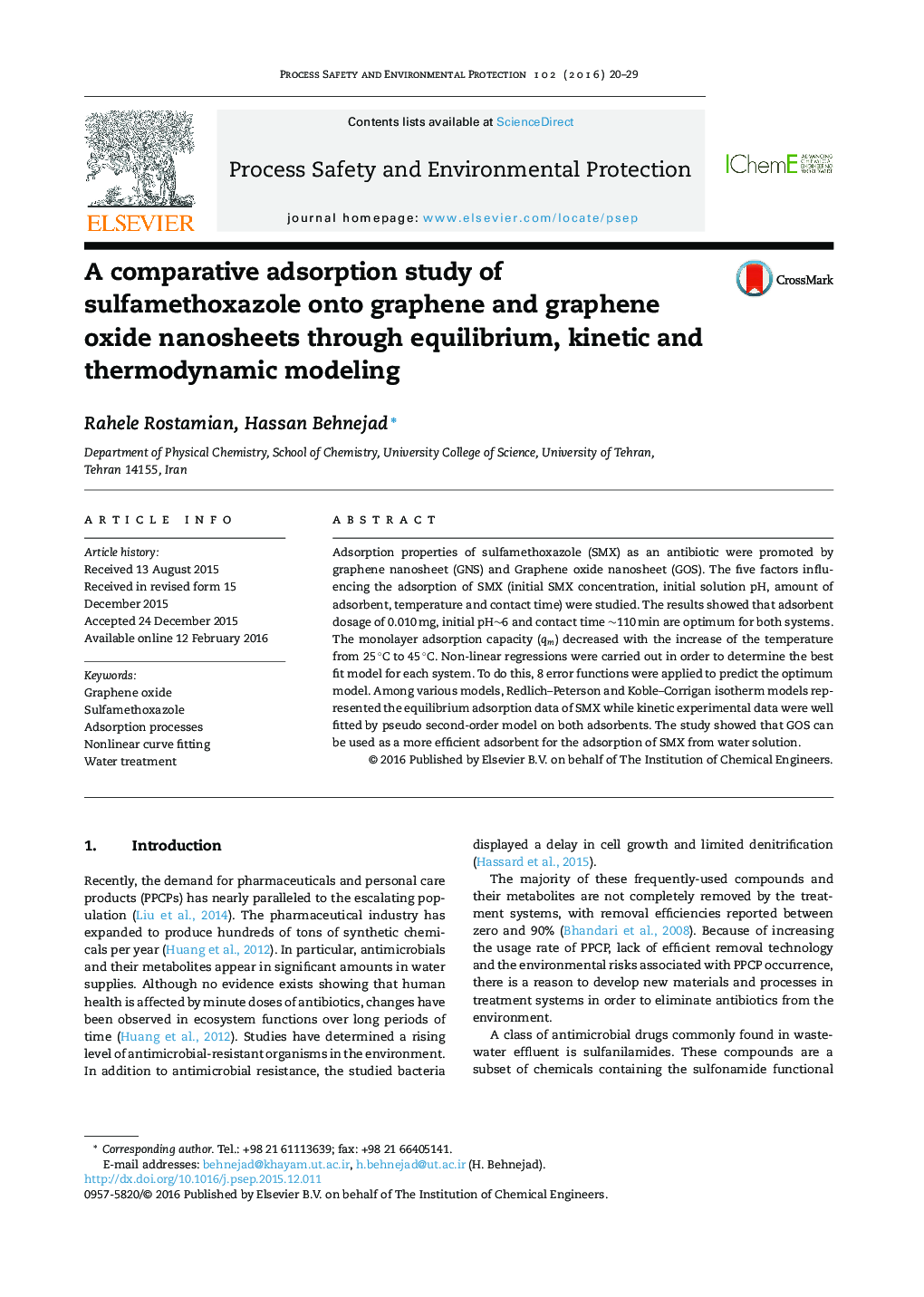| Article ID | Journal | Published Year | Pages | File Type |
|---|---|---|---|---|
| 588057 | Process Safety and Environmental Protection | 2016 | 10 Pages |
•Adsorption processes significantly are affected by pH and temperature.•The Redlich–Peterson and Koble–Corrigan isotherm models give better fittings.•The maximum adsorption capacity follows the order GOS > GNS.•Kinetic studies reveal that GOS can remove SMX more quickly.
Adsorption properties of sulfamethoxazole (SMX) as an antibiotic were promoted by graphene nanosheet (GNS) and Graphene oxide nanosheet (GOS). The five factors influencing the adsorption of SMX (initial SMX concentration, initial solution pH, amount of adsorbent, temperature and contact time) were studied. The results showed that adsorbent dosage of 0.010 mg, initial pH∼6 and contact time ∼110 min are optimum for both systems. The monolayer adsorption capacity (qm) decreased with the increase of the temperature from 25 °C to 45 °C. Non-linear regressions were carried out in order to determine the best fit model for each system. To do this, 8 error functions were applied to predict the optimum model. Among various models, Redlich–Peterson and Koble–Corrigan isotherm models represented the equilibrium adsorption data of SMX while kinetic experimental data were well fitted by pseudo second-order model on both adsorbents. The study showed that GOS can be used as a more efficient adsorbent for the adsorption of SMX from water solution.
Graphical abstractFigure optionsDownload full-size imageDownload high-quality image (196 K)Download as PowerPoint slide
